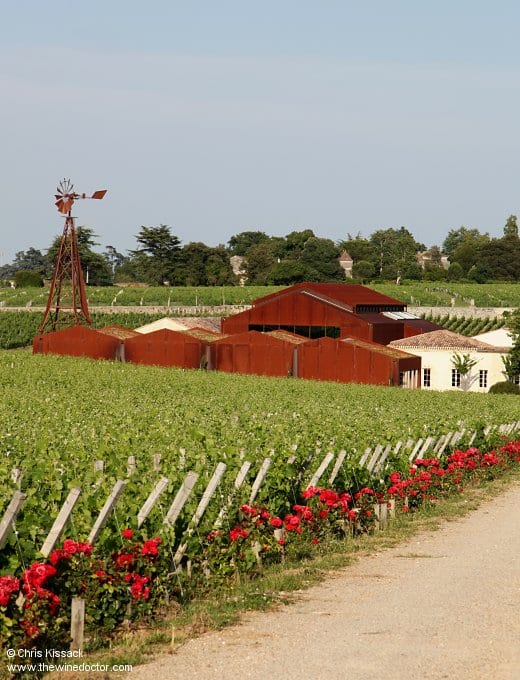Château Barde-Haut
Head east out of St Emilion and there is no mistaking the landscape. Take the road past Château Villemaurine and then Château Trotte Vieille and you are soon cast adrift on a sea of vines, stretching as far as the horizon on either side of the road. The gentle undulations of the land, detailed only with the occasional copse of trees, perhaps running along a ridge line, is all that breaks up the monotony of this vinous monoculture. That and, of course, the occasional building, in some cases an elegant château, in others a more functional agricultural ferme. Whichever it is, the majority are built from the local limestone, a very elegant construction material, and topped of by a patchwork quilt of ochre, brown and terracotta tiles.
Set against this backdrop, one building – or rather one collection of buildings – breaks the hegemony of limestone and tile. Just as the road bends to the left you will catch sight of it, sitting in a dip at the end of a long gravel driveway. What will first catch your eye is the vibrant, rusty red-brown hue of its walls and, provided the time of year is favourable, its green, grass-coated roof. I predict that within an instant, however, your gaze will be drawn to another unexpected sight; here, next to the rusty cellars, stands a tall mechanical windmill of the same rusty red-brown hue which would not look out of place in the American Midwest. Indeed, it is as if a Kansas cattle ranch had been lifted up by one of the state’s famous tornadoes and deposited here, on the slopes of St Christophe des Bardes. All we need is Toto and the Tin Man to complete the picture. I can’t help feeling it is a shame that the aforementioned driveway isn’t paved with yellow brick.

